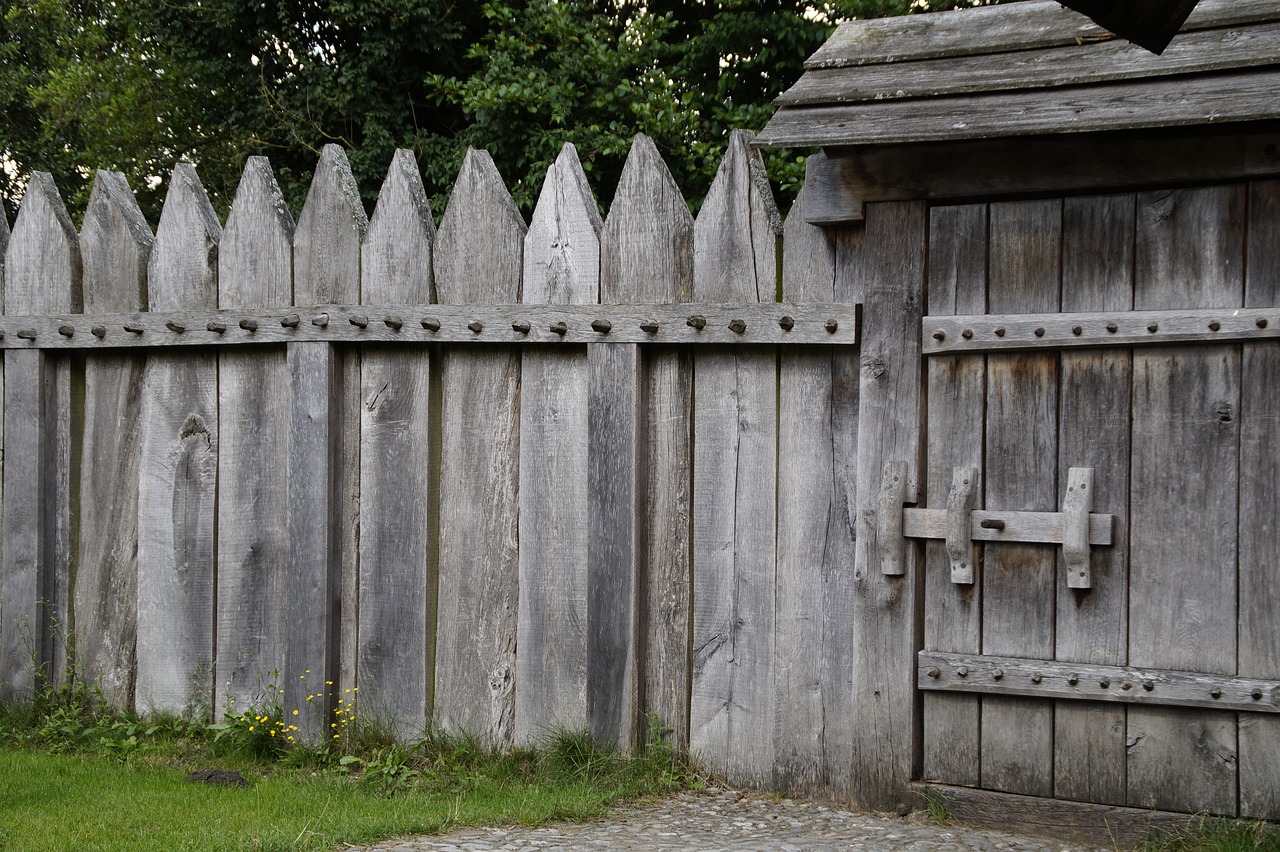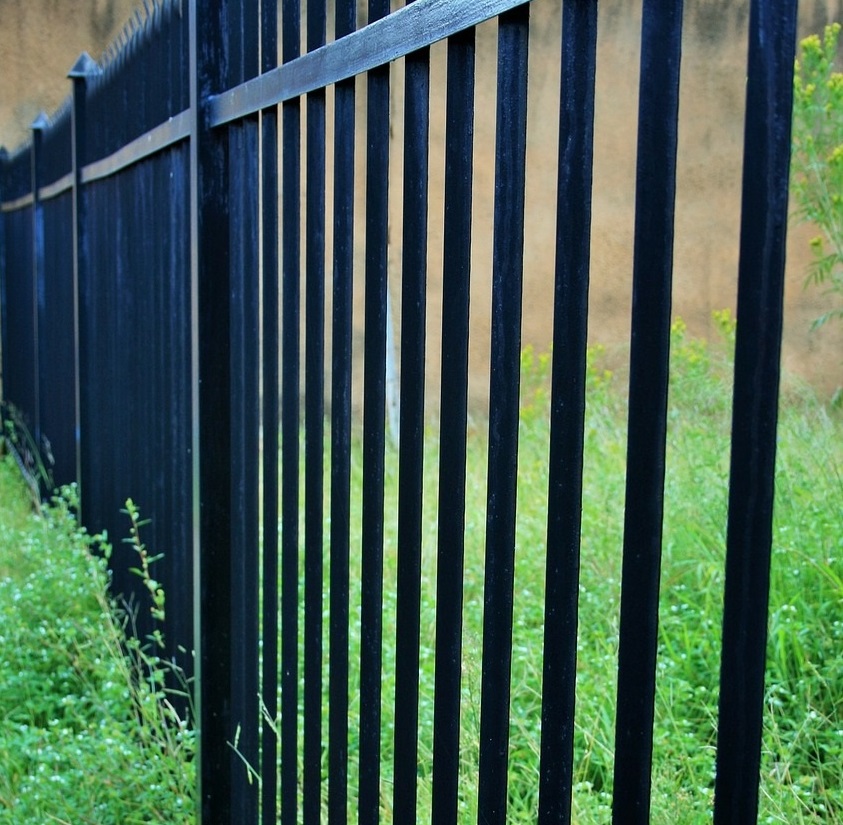Palisade

|
Contents |
[edit] Introduction
A palisade (derr. Latin ‘palus’ meaning stake) is a wall or fence typically comprising individual vertical elements bound together to form a sturdy barrier, usually for the purposes of creating a secure enclosure. Palisades are typically made from timber or metal stakes. The visual effect may be of a wall or fence, depending on whether there are gaps between the uprights.
[edit] Historical use
Historically, palisades were made from tree trunks arranged without gaps and rising up to 4m in height. The tops would usually be pointed like a pencil to create a more effective deterrent. They were quickly and easily built from materials that were often readily available. Because of this, a palisade might have been built as a temporary wall around a castle until a more permanent stone wall could be constructed.
Ancient Greek and Roman military camps would often be encircled by palisades, and such constructions were also common in medieval Germany and colonial America.
[edit] Modern variants

|
Wooden palisade fencing can resemble a traditional picket fence. However, contemporary palisades (pictured above) are just as likely to be made from steel, comprising slender uprights with gaps of less than 100mm between. They are very difficult to climb, provide high levels of security and damage resistance, and have proven popular for schools and on industrial sites.
A typical construction for galvanised steel palisade fences up to 3m high is to have two horizontal rails – an upper and lower – although for taller fences additional rails can be included at higher levels. The uprights (or ‘pales’) are typically fixed to the horizontal rails using galvanised bolts. Special uprights are set into shallow concrete pad foundations at intervals determined by the manufacturer’s specification.
Individual pales are available in various profiles such as W- or D-shaped with spiked heads to provide more effective deterrents.
[edit] Related articles on Designing Buildings
Featured articles and news
Infrastructure that connect the physical and digital domains.
Harnessing robotics and AI in challenging environments
The key to nuclear decommissioning and fusion engineering.
BSRIA announces Lisa Ashworth as new CEO
Tasked with furthering BSRIA’s impressive growth ambitions.
Public buildings get half a million energy efficiency boost
£557 million to switch to cleaner heating and save on energy.
CIOB launches pre-election manifesto
Outlining potential future policies for the next government.
Grenfell Tower Inquiry announcement
Phase 2 hearings come to a close and the final report due in September.
Progress from Parts L, F and O: A whitepaper, one year on.
A replicated study to understand the opinion of practitioners.
ECA announces new president 2024
Electrical engineer and business leader Stuart Smith.
A distinct type of countryside that should be celebrated.
Should Part O be extended to existing buildings?
EAC brands heatwave adaptation a missed opportunity.
Definition of Statutory in workplace and facilities management
Established by IWFM, BESA, CIBSE and BSRIA.
Tackling the transition from traditional heating systems
59% lack the necessary information and confidence to switch.
The general election and the construction industry
As PM, Rishi Sunak announces July 4 date for an election.
Eco apprenticeships continue help grow green workforce
A year after being recognised at the King's coronation.
Permitted development rights for agricultural buildings
The changes coming into effect as of May 21, 2024.






















Comments
[edit] To make a comment about this article, click 'Add a comment' above. Separate your comments from any existing comments by inserting a horizontal line.